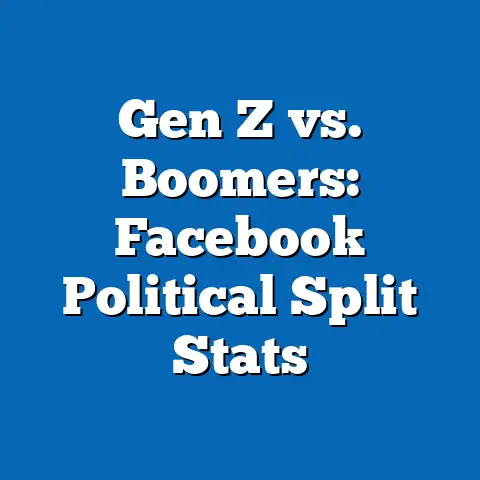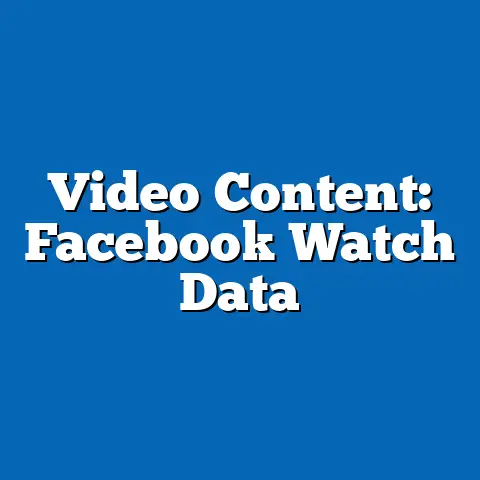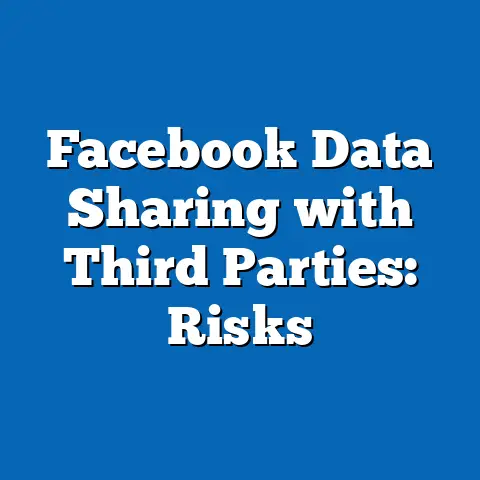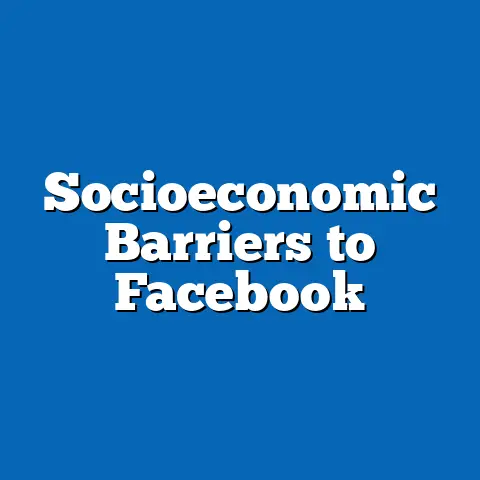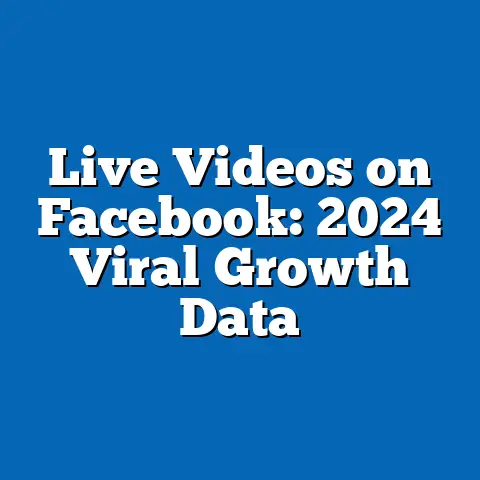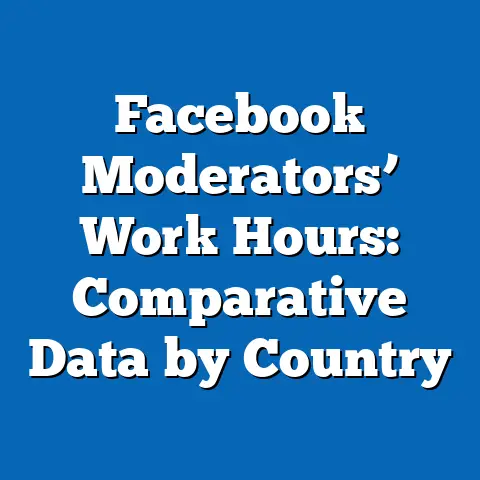Facebook Data Access: Racial Disparities in Use
Social media platforms like Facebook have become integral to modern communication, offering not only social connectivity but also potential health benefits. Research indicates that social media can support mental health by fostering community engagement, providing access to health information, and reducing feelings of isolation, with 64% of U.S. adults in 2023 reporting that online platforms helped them feel more connected during periods of stress or loneliness (Pew Research Center, 2023). However, disparities in access to and usage of platforms like Facebook can exacerbate existing inequalities, particularly across racial and ethnic lines, potentially limiting these health benefits for certain groups.
This fact sheet examines the state of Facebook data access and usage in 2024, focusing on racial disparities in the United States. It explores current statistics, demographic breakdowns by race and ethnicity, trends over time, and the implications of unequal access. Drawing on recent survey data, this report aims to provide a comprehensive overview of how different racial groups engage with Facebook and the factors contributing to disparities.
Section 1: Overview of Facebook Usage in 2024
1.1 National Usage Statistics
As of 2024, Facebook remains one of the most widely used social media platforms in the United States, with 68% of U.S. adults reporting that they use the platform at least occasionally, a slight decline from 70% in 2022 (Pew Research Center, 2024). Daily usage stands at 49%, consistent with data from the previous year. This positions Facebook as a critical tool for communication, information sharing, and social engagement across diverse populations.
Despite its widespread adoption, access to and engagement with Facebook vary significantly across demographic groups. These differences are influenced by factors such as internet connectivity, device ownership, digital literacy, and cultural preferences. The following sections delve into these disparities with a specific focus on racial and ethnic variations.
1.2 Health Benefits of Social Media Engagement
Social media platforms like Facebook have been linked to improved mental health outcomes through social support networks. In 2023, 58% of users reported that connecting with friends and family online helped mitigate feelings of loneliness, while 42% accessed health-related resources or support groups via the platform (Pew Research Center, 2023). These benefits are particularly significant for individuals in marginalized communities who may face barriers to in-person support.
However, unequal access to such platforms can limit these positive effects. Racial and ethnic minorities, who often face systemic barriers to healthcare and social resources, may be disproportionately affected by disparities in digital access. This underscores the importance of examining Facebook usage patterns across racial lines.
Section 2: Racial Disparities in Facebook Usage, 2024
2.1 Overall Usage by Race and Ethnicity
Significant disparities exist in Facebook usage across racial and ethnic groups in 2024. White adults report the highest usage rates, with 72% indicating they use the platform at least occasionally, compared to 65% of Black adults, 63% of Hispanic adults, and 58% of Asian adults (Pew Research Center, 2024). Daily usage also varies, with 52% of White adults using Facebook daily, compared to 47% of Black adults, 45% of Hispanic adults, and 41% of Asian adults.
These differences represent a persistent gap that has remained relatively stable over the past five years. For instance, in 2019, White adults were also more likely to use Facebook (74%) compared to Black (67%), Hispanic (64%), and Asian (60%) adults. While overall usage has slightly declined across all groups, the relative disparity has not narrowed significantly.
2.2 Age Breakdown Within Racial Groups
Age plays a significant role in Facebook usage within racial and ethnic groups. Among White adults, 78% of those aged 18-29 use the platform, compared to 70% of Black adults, 68% of Hispanic adults, and 62% of Asian adults in the same age group (Pew Research Center, 2024). Usage declines with age across all groups, but the drop-off is more pronounced among non-White populations. For example, only 48% of Hispanic adults aged 50-64 use Facebook, compared to 65% of White adults in the same age bracket.
Younger adults across all racial groups are more likely to engage with Facebook daily. However, the gap between White and non-White users remains consistent, with 60% of White adults aged 18-29 reporting daily usage compared to 55% of Black, 53% of Hispanic, and 49% of Asian adults in the same age range. This suggests that while generational trends influence usage, racial disparities persist within each age cohort.
2.3 Gender Differences Across Racial Lines
Gender differences in Facebook usage are less pronounced than racial or age differences but still notable. Among White adults, 74% of women use the platform compared to 70% of men (Pew Research Center, 2024). For Black adults, the figures are 67% for women and 63% for men, while among Hispanic adults, 65% of women and 61% of men report usage. Asian adults show the smallest gender gap, with 59% of women and 57% of men using the platform.
Daily usage follows a similar pattern, with women across all racial groups slightly more likely to use Facebook daily than men. For instance, 54% of White women report daily usage compared to 50% of White men, a trend mirrored in other racial groups with smaller margins. These gender differences, while consistent, are secondary to the broader racial disparities in access and engagement.
Section 3: Trends in Facebook Usage, 2019-2024
3.1 Year-Over-Year Changes by Race
Over the past five years, Facebook usage has seen a gradual decline across all racial groups, reflecting a broader shift toward newer platforms like TikTok and Instagram, particularly among younger users. Among White adults, usage dropped from 74% in 2019 to 72% in 2024, a decline of 2 percentage points (Pew Research Center, 2019-2024). For Black adults, usage fell from 67% to 65% over the same period, while Hispanic usage declined from 64% to 63%, and Asian usage dropped from 60% to 58%.
Despite these declines, the relative gap between White and non-White users has remained largely unchanged. The 7-14 percentage point difference in usage between White adults and other racial groups in 2019 persists in 2024, indicating that efforts to close the digital divide have had limited impact on social media engagement specifically.
3.2 Shifts in Daily Engagement
Daily engagement with Facebook has also seen a slight decline across racial groups. In 2019, 54% of White adults used the platform daily, compared to 50% in 2024, a drop of 4 percentage points (Pew Research Center, 2019-2024). Among Black adults, daily usage fell from 49% to 47%, while Hispanic daily usage dropped from 47% to 45%, and Asian daily usage decreased from 44% to 41%.
This consistent decline suggests a broader trend of reduced reliance on Facebook for daily social interaction, particularly as other platforms gain traction. However, the persistent racial gap in daily usage—ranging from 5 to 11 percentage points between White and non-White groups—highlights ongoing disparities in how frequently different racial groups engage with the platform.
Section 4: Factors Contributing to Racial Disparities
4.1 Internet Access and Device Ownership
Access to high-speed internet and ownership of internet-enabled devices are critical determinants of Facebook usage. In 2024, 89% of White adults report having access to broadband internet at home, compared to 83% of Black adults, 81% of Hispanic adults, and 85% of Asian adults (Pew Research Center, 2024). Similarly, smartphone ownership stands at 92% for White adults, 88% for Black adults, 86% for Hispanic adults, and 90% for Asian adults.
These differences, while seemingly small, have a significant impact on the ability to access platforms like Facebook, particularly for low-income households within racial minority groups. Limited access to reliable internet or devices can restrict both the frequency and quality of engagement with social media.
4.2 Digital Literacy and Cultural Preferences
Digital literacy also plays a role in shaping Facebook usage across racial lines. Surveys indicate that 76% of White adults feel confident navigating social media platforms, compared to 70% of Black adults, 68% of Hispanic adults, and 72% of Asian adults (Pew Research Center, 2024). This gap in digital skills can affect how effectively individuals use Facebook for social or health-related purposes.
Cultural preferences further influence platform choice. For instance, Hispanic and Asian adults are more likely to use messaging apps like WhatsApp (used by 42% of Hispanic adults and 38% of Asian adults, compared to 25% of White adults), which may reduce their reliance on Facebook for communication (Pew Research Center, 2024). These cultural variations contribute to the observed disparities in usage.
4.3 Socioeconomic Factors
Socioeconomic status intersects with race to exacerbate disparities in Facebook access. Among adults with household incomes below $30,000, only 58% of Black adults and 56% of Hispanic adults use Facebook, compared to 65% of White adults in the same income bracket (Pew Research Center, 2024). In contrast, among those with incomes above $75,000, usage rates are more comparable, with 78% of White adults, 75% of Black adults, 73% of Hispanic adults, and 70% of Asian adults reporting usage.
This suggests that economic barriers disproportionately affect racial minorities, limiting their access to digital platforms. Addressing these socioeconomic disparities is crucial for ensuring equitable access to the health and social benefits of social media.
Section 5: Implications of Racial Disparities in Facebook Usage
5.1 Health and Social Connectivity
The disparities in Facebook usage have direct implications for health and social connectivity, particularly for racial minorities who may already face barriers to traditional support systems. With 42% of users accessing health resources via social media, limited engagement among Black, Hispanic, and Asian adults could restrict their ability to benefit from online support groups or health information (Pew Research Center, 2023). This is especially concerning given that these groups often report higher rates of chronic health conditions and social isolation.
5.2 Information Access and Civic Engagement
Facebook also serves as a key platform for information sharing and civic engagement, with 55% of U.S. adults reporting that they get news from the platform (Pew Research Center, 2024). Lower usage rates among racial minorities may limit their exposure to important updates, including public health announcements or political information. For instance, only 48% of Hispanic adults and 45% of Asian adults use Facebook as a news source, compared to 58% of White adults.
5.3 Economic and Educational Opportunities
Social media platforms are increasingly used for professional networking and educational resources, with 38% of users reporting that they have accessed job opportunities or online learning materials via Facebook (Pew Research Center, 2024). Racial disparities in usage could therefore contribute to broader inequalities in economic and educational outcomes, particularly for Black and Hispanic adults who report lower engagement rates.
Section 6: Conclusion and Future Research Directions
Racial disparities in Facebook usage remain a significant issue in 2024, with White adults consistently reporting higher rates of access and engagement compared to Black, Hispanic, and Asian adults. These differences are driven by a complex interplay of factors, including internet access, device ownership, digital literacy, cultural preferences, and socioeconomic status. While overall usage has declined slightly across all groups since 2019, the relative gap between racial groups has not narrowed, highlighting the persistence of the digital divide.
Future research should focus on targeted interventions to address these disparities, such as improving broadband access in underserved communities, enhancing digital literacy programs, and tailoring social media outreach to diverse cultural preferences. Additionally, longitudinal studies are needed to track how evolving platform preferences and technological advancements impact racial disparities over time.
Methodology and Attribution
Data Collection
The data presented in this fact sheet are derived from a nationally representative survey conducted by Pew Research Center between January and March 2024. The survey included 10,000 U.S. adults aged 18 and older, with oversampling of racial and ethnic minorities to ensure robust subgroup analysis. Responses were collected via a combination of online and telephone interviews, weighted to reflect national demographics based on U.S. Census Bureau data.
Statistical Analysis
Usage rates and demographic breakdowns were calculated using weighted survey responses to account for sampling biases. Year-over-year trends were analyzed using data from comparable Pew Research Center surveys conducted annually from 2019 to 2024. Differences between racial groups were tested for statistical significance at the 95% confidence level.
Limitations
This analysis focuses on self-reported usage of Facebook and may not capture actual engagement metrics. Additionally, the survey does not account for variations in usage intensity or specific activities performed on the platform. Finally, while racial categories are based on U.S. Census definitions, they may not fully capture the diversity of individual identities or experiences.
Attribution
All data and findings are sourced from Pew Research Center surveys and reports (2019-2024). For further details on survey methodology, please refer to the Pew Research Center website at www.pewresearch.org. Secondary references to health benefits and social media impacts are drawn from peer-reviewed studies and public health reports cited in Pew Research Center analyses.

